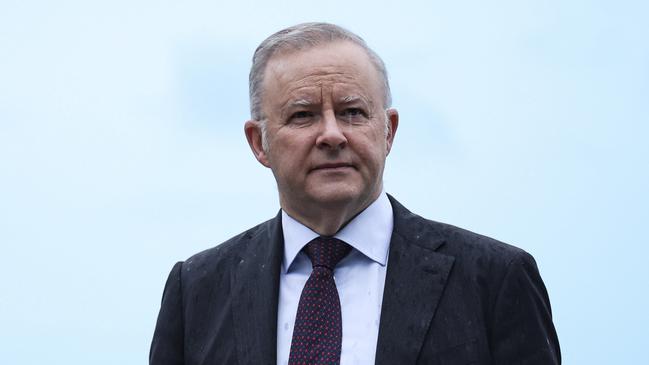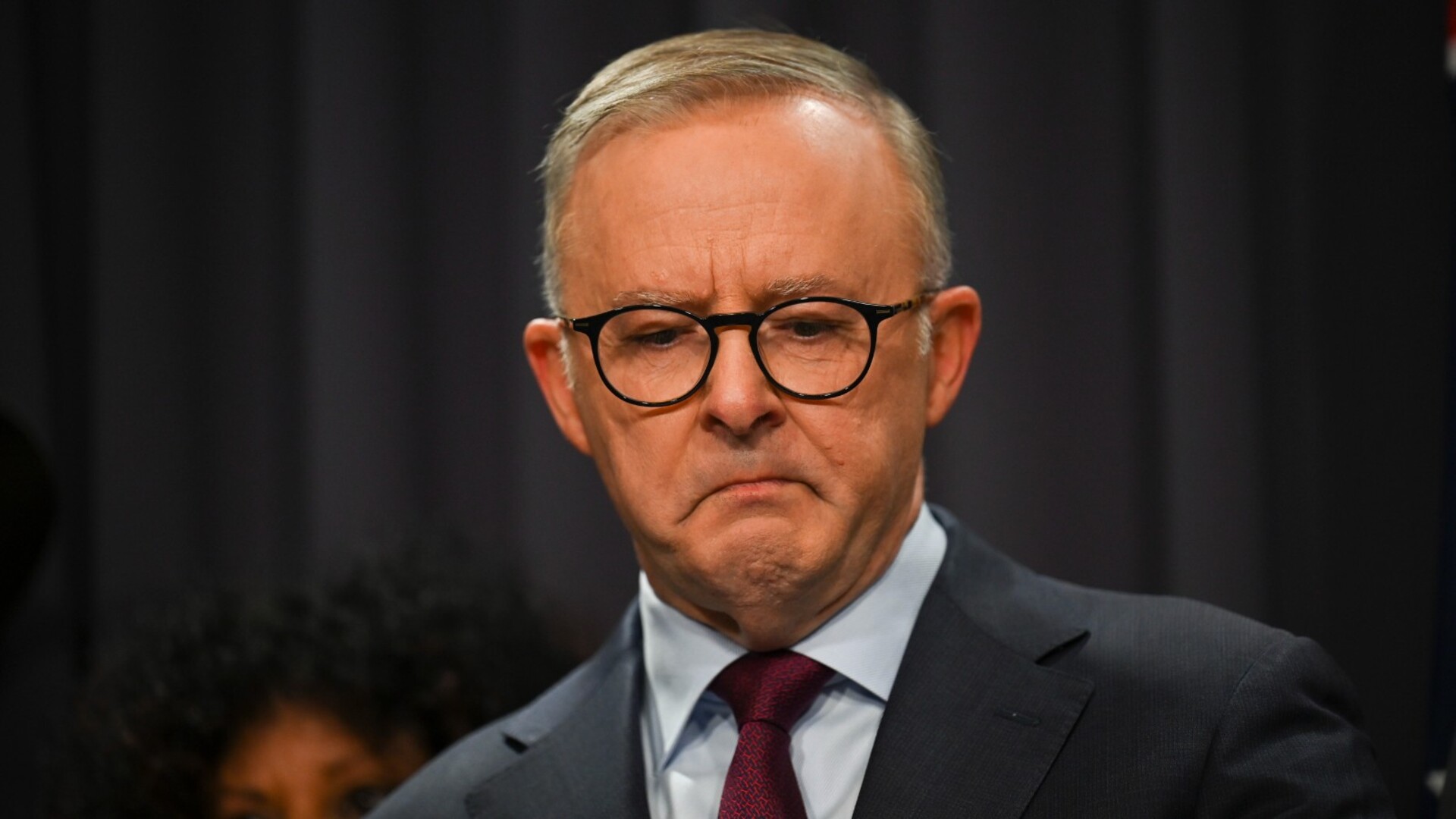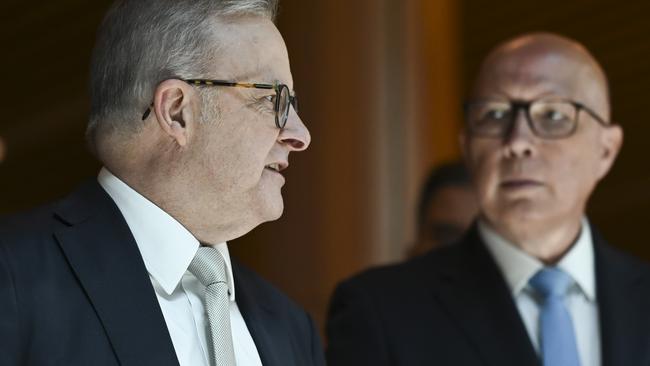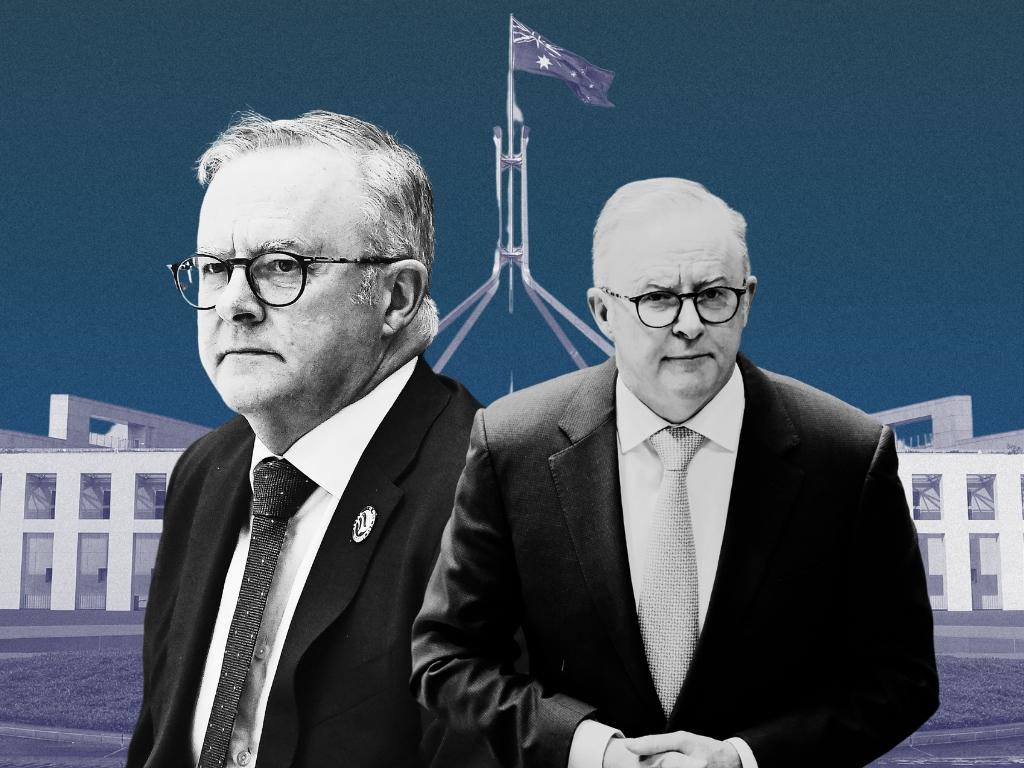Pain in the middle high for Anthony Albanese, Newspoll analysis finds
Victoria has emerged as a key battleground for the next federal election alongside NSW, as the Albanese government sheds critical support from Middle Australia amid the cost-of-living crisis.

Victoria has emerged as a key battleground for the next federal election alongside NSW, as the Coalition ties with Labor in both states and the Albanese government sheds critical support from Middle Australia amid the cost-of-living crisis.
Labor has also lost its edge with women voters. Both genders are now split 50-50 on the two major parties for the first time, exposing a myth that the Coalition continues to have a problem with women.
As Anthony Albanese marked the 50th anniversary of Cyclone Tracy hitting Darwin at a ceremony in the Northern Territory capital on Christmas Day, an exclusive demographic and state-by-state Newspoll analysis of the current political contest shows Labor having lost electoral territory in key demographics as well as in the two most populous states, which will hinder its ability to retain a majority government at the 2025 election.
The Greens are also in trouble, having lost territory to Labor among younger voters, reversing the trend. The minor party is struggling to rebuild the support it enjoyed at the last election as it boasts of pushing Labor further to the left on Israel and Middle East policy.
While the national contest heading into the election year remains tied at 50-50 on a two-party-preferred basis, Labor is behind in crucial demographics.

The most significant shift towards the Coalition in the past three months, the period covered by the latest analysis, has been among 35 to 49-year-old voters, a Middle Australia mortgage belt demographic considered the key group to swing election outcomes.
Labor’s primary vote among this group has continued to slide over the course of the year from 35 per cent in April to June, to 33 in the July-to-September survey, and now having dropped to 31 per cent in the October-to-December polling period.
The key issue for this group, as with others, has been the struggle with cost-of-living pressures but it is also the cohort considered most sensitive to interest rate pressures due to higher rates of property mortgages.
The decline in primary vote support has reduced Labor’s two-party-preferred lead in this demographic from 53 to 47 per cent six months ago to an even contest now with the Coalition.
The opposition has lifted its primary vote among this politically significant cohort to 37 per cent.
The Coalition either leads or is level with Labor in all the age demographics with the exception of younger voters. Among this group, Labor has lifted its lead over both the Coalition and the Greens with a 63 to 37 per cent two party preferred advantage. The Coalition leads Labor 62-38 among those over 65.
The state-by-state results show Labor under challenge in the two most populous states of NSW and Victoria.

While Western Australia was the key to Labor’s electoral victory in May 2022, with a 10 per cent swing towards it, Victoria and NSW appear to have become the states that will decide the next election.
The Coalition for the first time has drawn level with Labor in Victoria, where the state Labor government is deeply unpopular, with two-party-preferred support now split 50-50.
This represents an almost 5 per cent swing against the Albanese government compared with the 2022 election result.
Labor’s primary vote has fallen to a new low of 30 per cent in Victoria. This represents a three-point fall over the past three sample periods. Labor’s Victorian primary vote is now lower than the 32 per cent support it has in NSW and only a point higher than its primary vote of 29 per cent in Queensland.
At the same time, the Coalition’s primary vote has lifted from 36 to 39 per cent over the same period in Victoria.
Approval of Anthony Albanese’s leadership has followed a similar decline in trajectory among Victorian voters, having slipped from 46 per cent approval in April to June, to 44 per cent in the following quarter and 41 per cent now.
His disapproval ratings have also increased from 48 per cent to 53 per cent over the same period, giving him a net negative approval rating of minus 12 in Victoria.
This is now his worst state apart from NSW and Queensland.

Mr Albanese is also level with Peter Dutton’s net approval ratings in Victoria of minus 12, which is consistent with the Opposition Leader’s national average.
The two-party-preferred contest in NSW is also split at 50-50. Both the major parties have seen a lift in their primary vote with the Coalition gaining two points to 40 per cent in the past three months while Labor has improved from 30 to 32 per cent.
Significantly, the Greens have fallen two points to 10 per cent in the largest state, representing one of their lowest levels of support in the country outside South Australia where support is at 9 per cent.
This has altered the two party preferred outcome in NSW from 51-49 in the Coalition’s favour in the July-to-September quarter to 50-50 in the most recent analysis.
Labor, however, has picked up ground in Western Australia, with its two-party-preferred lead lifting from 52-48 per cent in the previous survey period to 54-46.
Both the Coalition and Labor have lost primary vote support in Queensland in the wake of the LNP retaking power in the October state election. The Coalition’s primary vote dropped two points to 41 per cent while Labor fell a point to 29 per cent. While Queensland remains the Coalition’s strongest state, its two-party-preferred lead fell from 54-46 in the previous survey to 53-47.
While Mr Albanese remains significantly more preferred as Prime Minister in Western Australia and South Australia with a 14-point margin over Mr Dutton, the Liberal leader is ahead of Mr Albanese in Queensland and trails by only four points in NSW.
There is a 10-point gap between the two leaders in Victoria which is a halving of Mr Albanese’s lead just six months ago.
The quarterly Newspoll analysis is based on the regular Newspoll survey series between October 7 and December 6 with 3775 voters throughout Australia interviewed online. Individual state sample bases range from 280 to 1193 voters.







To join the conversation, please log in. Don't have an account? Register
Join the conversation, you are commenting as Logout